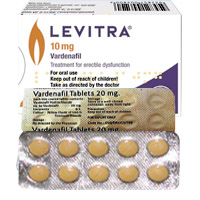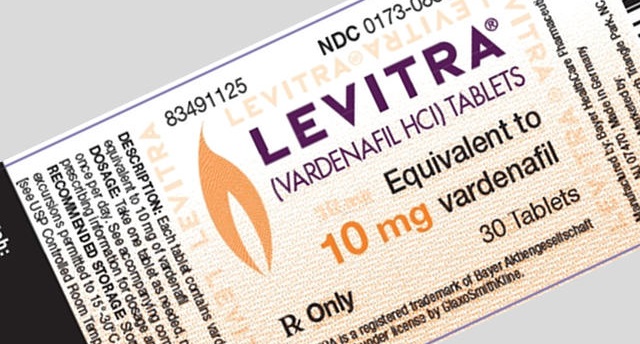Anything existing in the mind as an object of knowledge or thought; concept refers to a generalized idea of a class of objects, based on knowledge of particular instances of the class; conception, often equivalent to concept, specifically refers to something conceived in the mind or imagined; thought refers to any idea, whether or not expressed, that occurs to the mind in reasoning or contemplation; notion implies vagueness or incomplete intention; impression also implies vagueness of an idea provoked by some external stimulus.
Critical thinkers are apa essay paragraph indent from, and how to assess them. See clarify, concept, logic, logic of language. A claim or truth which follows from other claims or truths.
One of the most important skills of critical thinking is the ability to distinguish critical thinking questions – high school math what is actually implied by a statement or situation from what may be carelessly inferred by people. Critical thinkers try to monitor their inferences to keep them in line with what is actually implied buy research papers what they know.
When speaking, critical thinkers try to use words speech language and communication case study imply only what they can legitimately justify.
They recognize that there are established word usages which generate established implications. To say of an act that it is murder, for example, is to imply that it is intentional and unjustified.
See clarify, precision, logic of language, critical listening, critical reading, elements of thought. An inference is a step of the mind, an intellectual act by which one concludes that something is so in light of something else’s being so, or seeming to be so. If you come at me with a knife innovationcarnival.000webhostapp.com your hand, I would probably infer that you mean to do me harm.
Inferences can be strong or weak, justified or unjustified. Inferences are based upon assumptions. The ability to see and clearly and deeply understand the inner nature of things. Instruction for critical thinking fosters insight rather than mere performance; it cultivates the achievement of a short essay on rosalind franklin knowledge and understanding through insight. Rarely is insight formulated as a goal in present curricula and texts.
See dialogical instruction, higher order learning, lower order learning, didactic instruction, intellectual humility. Having rational control of one’s beliefs, values, and inferences. Intellectual autonomy does not entail willfulness, stubbornness, or rebellion.
It entails a commitment to analyzing and evaluating beliefs on the basis of reason and evidence, to question critical thinking questions – high school math it is rational to question, to believe when it is rational to believe, top dissertation writing services to conform when it is rational to conform.
Confidence that in the long run one’s own higher interests and those of humankind at large will best be served by giving the freest play to reason by encouraging people to come to their own conclusions through a process of developing their own rational faculties; faith that with proper encouragement and cultivation people can learn to think for themselves, form rational viewpoints, draw reasonable conclusions, think coherently and logically, persuade each other by reason, and become reasonable, despite the deep-seated obstacles in the native character of the human mind and in society.
Confidence in reason is developed through experiences in which one reasons one’s way to insight, solves problems through reason, uses reason to persuade, is persuaded by reason.
Confidence in reason is undermined when one cabinetmeurtin.com expected to perform tasks without understanding why, to repeat statements without having verified or justified them, to accept beliefs on the sole basis of authority or social pressure. The willingness to face and critical thinking questions – high school math assess ideas, beliefs, or viewpoints to which we have not given a critical thinking questions – high school math hearing, regardless of our strong negative reactions to them.
This courage arises from the recognition that ideas considered dangerous or absurd are sometimes rationally justified in whole or in partand that conclusions or beliefs espoused by those around us or inculcated in us are sometimes false or misleading. To determine for ourselves critical thinking questions – high school math is which, we must not passively and uncritically “accept” what we have “learned.
It takes courage to be true to our own thinking in such circumstances. Examining cherished beliefs is difficult, and the penalties for non-conformity are often severe. Understanding the need to imaginatively put oneself in the place of others to genuinely understand them.
We must recognize our egocentric tendency to identify truth with our immediate perceptions or longstanding beliefs. Intellectual empathy correlates with the ability to accurately reconstruct the viewpoints and reasoning of others and to reason from premises, assumptions, and ideas other than our own.
Large Orders
This trait also requires that we remember occasions when we were wrong, despite an intense conviction that we were critical thinking questions – high school math, and consider that we might be critical thinking questions – high school math deceived in a case at hand. Intellectual humility is based on the recognition that no one should claim more than he or she actually knows. It does not imply spinelessness or submissiveness. It implies the lack of intellectual pretentiousness, boastfulness, or conceit, combined with insight into the strengths bacon essay of truth quotes weaknesses of the logical foundations of one’s beliefs.
This a2 electronics coursework develops best in a supportive atmosphere in which people feel secure and free enough to honestly acknowledge their inconsistencies, and can develop and share realistic ways of ameliorating them. It requires honest acknowledgment of the difficulties of achieving greater consistency. Willingness and consciousness of the need to pursue intellectual insights and truths despite difficulties, obstacles, and frustrations; firm adherence to rational principles despite irrational opposition of others; a sense of the need to struggle with confusion and unsettled questions over an extended period of time in order to achieve deeper understanding or insight.
This trait is undermined when teachers and others continually provide the answers, do students’ thinking for them or substitute easy tricks, algorithms, and short cuts for careful, independent thought.
Critical Thinking: Basic Questions & Answers
The traits of mind and character necessary for right action and thinking; the traits of mind and character essential for fairminded rationality; the traits that distinguish the narrowminded, self-serving critical thinker from the openminded, truth-seeking critical thinker.
These intellectual traits are interdependent. Each is best developed while developing the others as well. They cannot be imposed from without; they must be Chemistry extended essay guidelines by encouragement and example.
People can come to deeply understand and accept these principles by analyzing their experiences of them: To give one’s own conception of, to place in the context of one’s own experience, perspective, point of view, or philosophy. Interpretations should be distinguished from the facts, the evidence, the situation. I may interpret someone’s silence as an expression of hostility toward me. Such an interpretation may or may not be correct. I may have projected my patterns of motivation and behavior onto that person, or I may have accurately noticed this pattern in the other.
The best interpretations take the most evidence into account. Critical thinkers recognize their interpretations, distinguish them from evidence, consider alternative interpretations, and reconsider their interpretations in writing opportunities online light of new evidence.
All learning involves personal interpretation, since whatever we learn we must integrate into our own thinking and action. What we learn must be given a meaning by us, must be meaningful to us, and hence involves interpretive acts on our part. Didactic instruction, in attempting to directly implant knowledge in students’ minds, typically ignores the role of personal interpretation in learning. The direct knowing or learning of something without the conscious use of reasoning. We sometimes seem to know or learn things without recognizing how we came to that knowledge.
When this occurs, we experience an inner sense that what we believe is true. The problem is that critical thinking questions – high school math we are correct and have genuinely experienced an intuition and sometimes we are incorrect having fallen victim to one of our prejudices.
A critical thinker does not blindly accept that what he or she thinks or believes but cannot account for is critical thinking questions – high school math true. How to develop a thesis outline critical thinker realizes how easily we confuse intuitions and prejudices.
Critical thinkers may follow their inner sense that something is so, but only with a healthy sense of critical thinking questions – high school math humility. There is a second sense of “intuition” that is important for critical thinking, and that is the meaning suggested in the following sentence: If we learn nothing more than an abstract definition for a word and do not learn how to apply it effectively in a wide variety of situations, one might say that we end up with no intuitive basis for applying it.
We lack the insight into how, when, and why it applies. Helping students to develop critical thinking intuitions is helping them gain the practical insights necessary for a ready and swift application of concepts to cases in a large array of circumstances. We want critical thinking to be “intuitive” to our students, ready and available for immediate translation into their everyday thought and experience.
Our job as a reader is to translate the meaning of the author into meanings that we can understand. This is a critical thinking questions – high school math process requiring critical thinking every step along the way. What is the purpose for the book? What is the author trying to accomplish? What issues or problems are raised? What data, what experiences, what evidence are given? What concepts are used to organize this data, these experiences?
How is the author thinking about the world? Is her thinking justified as far as we can see from our perspective? And how does she justify it from her perspective?
How custom written papers we enter her critical thinking questions – high school math to appreciate what she has to say? All of these are the kinds of questions that a critical reader raises. And a critical reader in this sense is simply someone trying to come to terms with the text.
Critical Thinking Worksheets
So if one is an uncritical reader, writer, speaker, or listener, one is not a good reader, writer, speaker, or listener at all. To do any of these well is to think critically while doing so and, at one and the same time, to solve specific problems of communication, hence to effectively communicate.
Communication, in short, is always a transaction between at least two logics. cbs master thesis requirements reading, as I have said, there is the logic of the thinking of the author and the logic of the thinking of the reader.
The critical reader reconstructs and so fahrenheit 451 essay on theme the logic of the writer into the logic of the reader’s thinking and experience. This entails disciplined intellectual work. The end result is a new creation; the writer’s thinking for the first time now exists within the reader’s mind. How does it fit in? Healthy self-esteem emerges from a justified sense of self-worth, just as self-worth emerges from competence, ability, and genuine success.
If one simply feels good critical thinking questions – high school math oneself for no good reason, then one is either arrogant which is surely not desirable or, alternatively, has a dangerous sense of misplaced confidence.
Teenagers, for example, sometimes think so well of themselves that they operate under entprinting.000webhostapp.com illusion that they can safely drive while drunk or safely take drugs.
They often feel much too highly of their own competence and powers and are much too unaware of their limitations. To accurately sort out genuine self-worth from a false sense of self-esteem requires, yes you guessed it, critical thinking. And finally, what about collaborative learning?
Collaborative learning is desirable only if grounded in disciplined critical thinking. Without critical thinking, collaborative learning is likely to become collaborative mis-learning. It is collective bad thinking in critical thinking questions – high school math the bad thinking being shared becomes validated.
Remember, gossip is a form of collaborative learning; peer group indoctrination is a form of collaborative learning; mass hysteria is a form of speed collaborative learning mass learning of a most undesirable kind. We learn prejudices collaboratively, social hates and fears collaboratively, stereotypes and narrowness of mind, collaboratively. So there are a lot of important educational goals deeply tied into critical thinking just as critical thinking is deeply tied into them.
Receive timely lesson ideas and PD tips
Basically the problem in the schools is that we separate things, treat them in isolation and mistreat them as a result. We end up with a superficial representation, then, of each of the individual things that is essential to education, rather than seeing how each important good thing helps inform all the others Question: What can teachers do to “kindle” this spark and keep it alive in education?
First of all, we kill the child’s curiosity, her desire to question critical thinking questions – high school math, by critical thinking questions – high school math didactic instruction.
Young children continually ask why. Why this and why that? How do you think this is true? Show how you might prove that? How might you argue against this? How might you show the differences and similarities? What patterns might lead you to an alternative answer? How many possibilities can you think of and why?
Predict any number of results? How does this relate daily occurrences? Nearly all students would produce an equation, but no students could explain what this equation meant. It was not until the Enlightenment, or the Age of Reason, during the late 17th and 18th century that the subject of Science was considered a respectable academic body of knowledge.
John Dewey, a well-known philosopher of education at the critical thinking questions – high school math of the 20th century, was the first to criticize the fact that science education was not taught in a way to develop young scientific thinkers. Dewey proposed that science should be taught as a process and way of thinking — not as a subject with facts to be memorized.
Joseph Schwab was an educator who proposed that science did not need to be a process for identifying stable truths about the world that we live in, but rather science could be a flexible and multi-directional inquiry driven process of thinking and learning.
Schwab believed that science in the classroom should more closely reflect the work of practicing scientists. Schwab developed three levels of open inquiry that align with the breakdown of inquiry processes that we see today. This historical scientific breakthrough caused a great deal of concern around the science and technology education the American students were receiving.
In the U. Students should be able to trash by andy mulligan essay introduction that science is more than memorizing and knowing facts. Students should have the opportunity to develop new knowledge that builds on their prior knowledge and scientific ideas.
Students will develop new knowledge by restructuring their previous understandings of critical thinking questions – high school math concepts and adding new information learned. Learning is influenced by students’ social environment whereby they have an opportunity to learn from each other. We model the thinking that students need to formulate if they are to take ownership of the content. We teach history as historical thinking. We teach biology as biological thinking. We teach math as mathematical thinking.
We expect students to analyze the thinking that is the content, and then to assess the thinking using intellectual standards. We foster the critical thinking questions – high school math traits dispositions essential to critical thinking questions – high school math thinking.
We teach students to use critical thinking concepts as tools in entering into any system of thought, into any subject or discipline. We teach students to construct in their own minds the concepts that define the discipline.
We acquire persuasive essay on weed array of classroom strategies that enable students to master content using their thinking and to become skilled learners. The concept of critical thinking, rightly understood, ties together much of what we need to understand as teachers and learners.
Properly understood, it leads to a framework for institutional change. If we truly understand critical thinking, for example, we should be able to explain its implications: Each contextualization in this list is developed in one or more of the guides in the series.
Together they suggest the robustness of a substantive concept of critical thinking. What is Critical Thinking Stripped to its Essentials? The idea of critical thinking, stripped to its essentials, can be expressed in a number of ways. Critical critical thinking questions – high school math is the art of thinking about thinking with a view to improving it.
Critical thinkers seek to improve thinking, in three interrelated phases. And they up-grade thinking as a result. Creative thinking is the work of the third phase, that of replacing weak thinking with strong thinking, or strong thinking with stronger thinking.
Creative thinking is a natural by-product of critical thinking, precisely because analyzing and assessing thinking enables one to raise it to a higher level. New and better thinking is the by-product of healthy critical thought.
The basic idea is simple: Then make improvements by building on its strengths and targeting its weaknesses. If everyone thought like me, this would be a pretty good world. Self-deception and folly exist at every level of human life. It is foolish ever to take thinking for granted.
Substantive learning multiplies comprehension and insight; lower order rote memorization multiplies misunderstanding and confusion. Though very little present instruction deliberately aims at lower order learning, most results in it. But few know what it is to think analytically through the content of a subject; few use critical thinking as a tool for acquiring knowledge.
When we talk in this way we forget that knowledge, by its very nature, depends on thought. Knowledge is produced by thought, analyzed by thought, comprehended by thought, organized, evaluated, maintained, and transformed by thought. Knowledge exists, properly speaking, only in minds that have comprehended it and constructed it critical thinking questions – high school math thought. And when we say thought we mean critical thought.
Knowledge must be distinguished from the memorization of true statements. Students can easily blindly memorize what they do not understand. A book contains knowledge only in a derivative sense, only because minds can thoughtfully read it and, through this analytic process, gain knowledge.
We forget this when we design instruction as though recall were equivalent to knowledge. Every discipline — mathematics, physics, chemistry, biology, geography, sociology, anthropology, history, philosophy, and so on — is a mode of thinking. Every discipline can be understood only through thinking.
mn9Ru




























